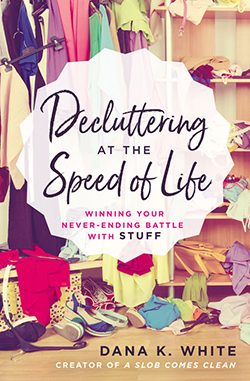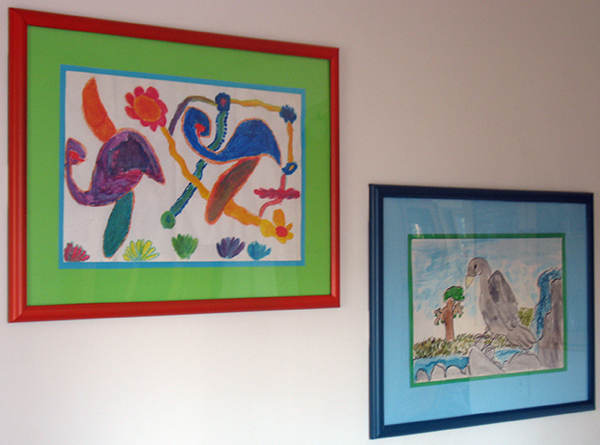
In the fall of 2020, I embarked upon a new decluttering venture, guided by Dana K. White’s book, Decluttering at the Speed of Life.
I made a lot of progress, completing a decent first pass through every room on the main floor of our house: living room, dining room, kitchen, bedroom, bath, and the fearsome-and-much-dreaded study.
I had help with the study! When my daughter returned home for winter break after her first semester in college, she was so impressed and inspired by my progress that she offered to pitch in. What a sweetheart!
The study was only half-tackled when she arrived, but it was done a mere 10 days later, and it looks great!
However, one of the things I did in the study was go through the box of artwork done by my children. It held some of their earliest work (age 2 years), as well as most of what they’d created through age 9.
Since the artwork had been sitting unseen for almost a decade, I found a lot of clarity when I looked through it. I knew what I wanted to keep, and I knew what I didn’t. I also knew what I wanted to frame and display.
Now, I could simply have set the art aside to be framed later. But I knew that if I did that another 10 years might pass in the blink of an eye. I’d already allowed too much time to pass—I’d not been enjoying the art for the whole time it sat in that box.
Plus there were the three pieces on the dining room wall with the bedraggled construction-paper frames they’d received at school. My husband and I loved the art. They deserved to be properly framed.
So, yes, I paused my decluttering to focus on art. I took an art detour! I thought I’d take you along with me. 😀
I tackled the dining room art first. Of the four pieces present, I wanted to frame three. The fourth was a crayon that had been faded by the sunlight so thoroughly that it was invisible (faded-to-white crayon on white paper).
I chose a replacement piece by my daughter from those I’d saved from the box, with the idea that I’d have two by my son and two by my daughter on the wall.
But when all four were framed, I discovered that mattes and frames together made the art MUCH LARGER. They wouldn’t all fit.
So, “Vulture Falls” by Miles Ney-Grimm and “Tropical Flight” by Rachel Ney-Grimm went up as a duo. They’re in the photo at the beginning of this post. I love that wall now—it looks so much better with the art framed.
My next focus was a set of prints created by Rachel, “Heavenly Hands” done in four variations: blue, cream, aqua, and white.
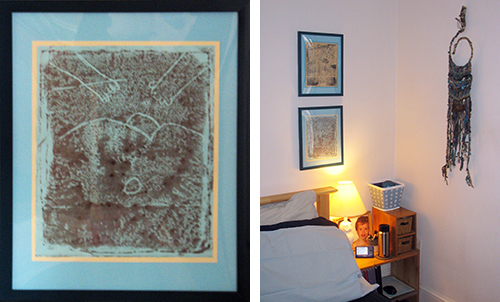
When my now-18-year-old daughter saw them, she wasn’t sure they were hers. She said, “Are you certain they’re mine? I wish they were—such a cool metaphor for deity—but maybe Miles did them.” She was happy when I showed her her own signature on the backs.
I’d imagined all four over my bedside table, but once again I’d mis-estimated the size of the framed pieces. Too large. So I put the Cream Variation and the Blue Variation in the bedroom. The White Variation and the Aqua Variation went beside the phone table in the living room.
(Yes, we still have a land line. Such boomers, as my daughter calls us, her parents.) 😀
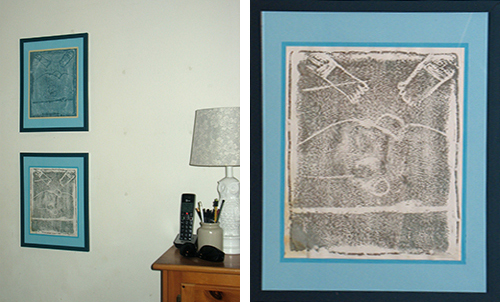
The holidays interrupted my art detour, just as the art detour interrupted the decluttering. And then getting both my children back to their respective colleges constituted yet another interruption. But I did get back to the art. (And I will get back to the decluttering.)
My son’s “Aqua Verticality” was next. It was tricky, because the yellow construction paper that served as the backing had faded, even away from light exposure in the box. I knew it would turn from yellow to a dull tan once up on the wall, just as had the old blue construction-paper frames on the dining room art.
So, at all the gaps between the painted strips of the collage made by Miles, I used an Xacto blade to cut out the fading backing. And then I re-mounted the entire assemblage on a sheet of fadeless yellow art paper. I think it turned out well.
I painted the frame. (Black frames and white frames are easy to acquire. But if you want another color…well, I suppose you could spend a boatload of money to get them. I chose to spray paint all except the two that I needed in black.)
Then I matted the piece, framed it, and hung it in our hall. I love it. I’d almost say that it is my favorite, except that I say the same thing of several of the others. 😀
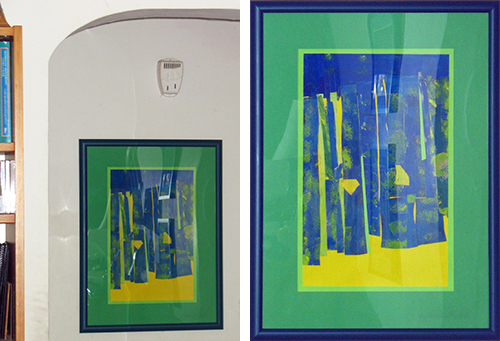
Next up were “Dragon” by Miles and “Houses,” also by Miles. They too had their tricky aspects. I’d been using fadeless art paper to create “floating” mattes, but the only fadeless paper in shades of gray came only in bulletin board sizes—4 feet by 8 feet! And the grays weren’t the right shade either.
So I decided to spray paint some of the art paper that I wouldn’t be using (such as the violet and the pink sheets). That worked really well.
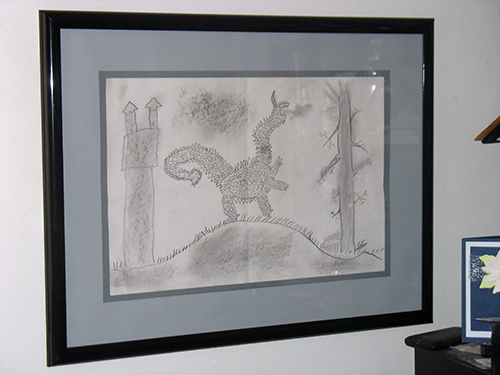
“Dragon” had been in the dining room, but it is one of my husband’s favorites (mine, too, actually), so I put it over his desk in our study.
“Houses” went on the other side of the window, over the desk that currently still holds my ancient desktop computer. My daughter helped me get the old photo files off it, so I will take it to an electronics recycling drop-off once the pandemic is over. Then that desk will become a craft/art table.
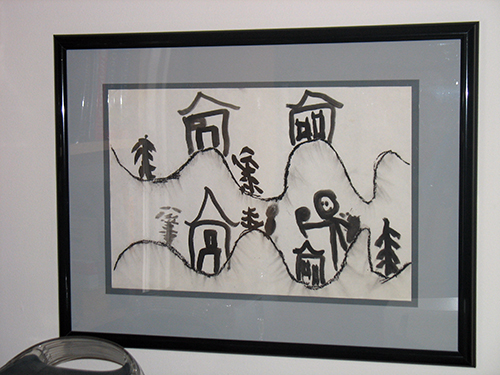
The last of the art was a print duo by Rachel. The orange variation of “House” had been in our dining room, while the gold variation lay in the box. I decided to frame the two together and put them over my main desk in our study.
First I had to take down the dozen pieces of art/reminders/affirmations that I’d generated back in 2007 while working my way through The Artist’s Way by Julia Cameron. I’d been inspired and supported by them for several years, but they were seriously old news now.
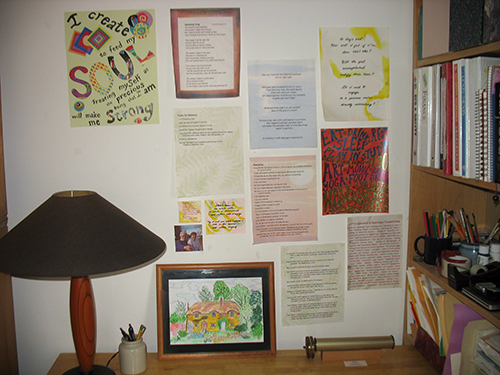
I did keep (and frame) “Soul,” as well as the watercolor (“Cottage”) and the photo portrait of my parents. But everything else is in a folder destined (eventually) for a scrapbook.
The new arrangement has “Soul,” “Cottage,” and the photo portrait grouped around “House” by Rachel.

And that is the close of my art detour. It’s time to get back to writing—and decluttering.
I’ll admit that when I’m head-down in a novel, I usually neglect my house. But I am hoping to find a way to balance the two. We’ll see! And I’ll keep you posted. 😀
For more about decluttering, see:
Whole House Purge
Getting Started with the KonMari Technique

